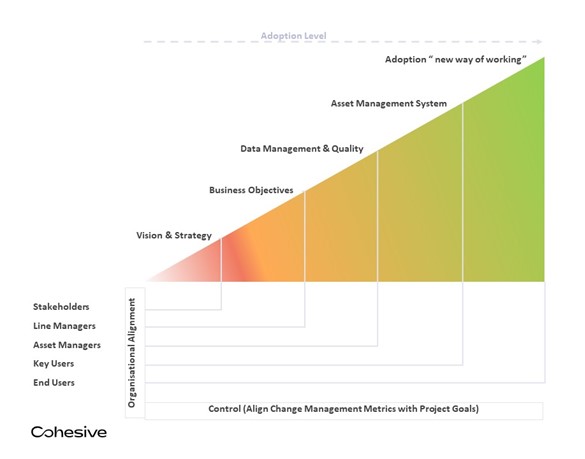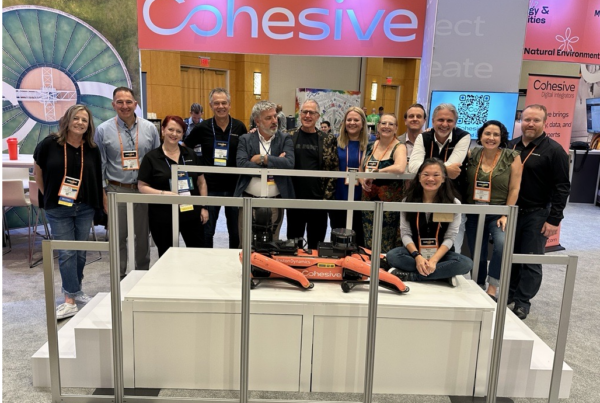Navigating Information Gaps, Cultural Maturity, and Political Complexity in the Transportation Sector
The transportation industry, specifically within transit agencies, faces distinctive challenges arising from limited information access, cultural maturity concerns, and the intricacies of a highly politicized landscape. Our change management consultancy delves into these specific hurdles and highlights the importance of implementing effective strategies to overcome them.
The Challenge of Limited Information Availability: Navigating Information Gaps
The industry often faces difficulties due to a lower level of information compared to other industries. This can be attributed to factors such as outdated data management systems, inadequate data sharing among agencies, and a lack of standardized reporting practices. Consequently, these impediments cast a shadow over the decision-making process, resulting in suboptimal planning, inefficient resource allocation, and a discernible reduction in service quality.
Cultural Maturity and Adaptability: Encouraging Transformational Shifts
Cultural maturity, the pivotal ability of an organization or industry to wholeheartedly embrace change, diversity, and innovation, proves to be a particularly formidable challenge in the transportation industry. Within the transportation sector, this hurdle often arises from deeply entrenched traditional practices, steadfast resistance to the adoption of new technologies, and a striking lack of diversity in leadership roles. Overcoming these barriers is crucial to fostering an environment that encourages innovation, collaboration, and continuous improvement.
The Complexities of Operating in a Highly Political Environment: Navigating Political Dynamics
This industry operates within a highly political environment, which adds another layer of complexity to the challenges faced by transit agencies. Political influences can significantly impact decision-making processes, funding allocations, and project prioritization. Additionally, businesses must navigate relationships with various stakeholders, including Line managers, C-level executives, and union members. Building strong relationships, communicating effectively, and actively involving stakeholders in decision-making processes mitigates political complexities.
Strategies for Overcoming Challenges in the Transportation Sector
To mitigate against the multiple challenges that this sector encounters, Cohesive has carefully crafted a set of Best Practices that encompass the following highly effective and transformative strategies:
Strategy 1: Implementing IBM Maximo Application Suite (MAS) 8 for Transportation – Revolutionizing Asset Management
The transportation industry can usher in a new era of operational excellence by incorporating a contemporary Asset Management system, augmented by transportation-specific accelerators. This innovative approach facilitates real-time data sharing, seamless interoperability, and the establishment of standardized reporting practices. The outcome? Enhanced decision-making capabilities, resource optimization, and the orchestration of vastly improved service planning.
IBM Maximo Application Suite also referred to as MAS, is a game-changer in intelligent asset management, combines monitoring, predictive maintenance, and reliability into a unified cloud-based platform. This innovative suite harnesses the power of AI, IoT, and analytics to drive performance optimization, extend asset lifecycles, and dramatically reduce operational downtime and costs.
In the realm of transportation, Cohesive champions IBM® Maximo® for Transportation as the solution to enhance productivity for critical transportation assets and meet rigorous regulatory demands. Maximo for Transportation offers a comprehensive solution, effectively managing all types of transportation assets, including fleets of cars, trucks, and buses.
Strategy 2: Fostering Cultural Transformation – Nurturing Progressive Adaptation
The evolution of cultural maturity within the transportation sector emerges as a pivotal strategy, requiring a deliberate focus on diversity, inclusivity, and innovation. To this end, the establishment of comprehensive training programs, thoughtfully designed mentorship initiatives, and the cultivation of leadership development opportunities all serve as indispensable tools for shaping an organizational culture that thrives on progressiveness and adaptability.
Strategy 3: Developing Effective Stakeholder Engagement – Building Strong Alliances
Creating a robust framework for stakeholder engagement proves instrumental in navigating the intricate political landscape within transit agencies. This strategy involves establishing transparent, all-inclusive processes designed to engage stakeholders, encompassing a spectrum ranging from Line managers to C-level executives and union members.
The result? The forging of resilient relationships, the facilitation of clear and impactful communication, and the active participation of stakeholders in the decision-making process, all serve to effectively mitigate political complexities.
MAS 8 for Transportation and Change Management Integration: A Cohesive Approach
MAS 8 for transportation is all about control, validation, and mitigation of risks, primarily focusing on your business objectives to align your staff during and after the project. Recognizing that business objectives and change management objectives are intertwined, we have integrated these elements to create a cohesive approach.

Change Management Success Metrics:
- Define Change Management Success Metrics: Specify metrics to measure the effectiveness of change management efforts, including adoption rates, user satisfaction, productivity, training completion, and turnover rates.
- Align Change Management Metrics with Project Goals: Ensure that these metrics align with the overall objectives of the Asset Management project.
- Establish Baseline Metrics: Conduct a readiness assessment to establish baseline metrics for change management success metrics.
- Monitor Change Management Metrics: Continuously monitor and track identified success metrics throughout the project’s duration.
- Integrate Change Management Metrics: Integrate change management success metrics with the overall project success metrics.
- Communicate Results: Share the results of change management success metrics with project stakeholders and leaders.
A Comprehensive Framework for Change: The 4-Stage Change Management Approach
The 4-stage change management approach is rooted in our EAM (Enterprise Asset Management) experience, transportation industry best practices, Agile project management standards, and project quality assurance. This approach begins with a readiness assessment to identify potential project risks and then proceeds to create a clear strategy, establish governance, and execute the change program.
Stage 1: Readiness Assessment
- Identify necessary changes.
- Analyze impacts and added value.
- Define desired outcomes.
- Assess risks and benefits.
Stage 2: Crafting the Change Strategy
- Co-create a transformation strategy.
- Involve employees early.
- Develop core change management plans.
- Develop roadmaps with MVP (Minimum Viable Product) for success.
Stage 3: Setting Up the Required Governance and Program
- Define future end states.
- Establish governance structures.
- Create a change framework.
- Prepare roles and responsibilities.
Stage 4: Executing the Change Program
- Prepare leadership and transformation teams.
- Implement change management plans alongside the MAS8 Program.
- Measure progress and adapt.
”"Cohesive believes that the integration of change management with MAS 8 for Transportation is a game-changer for this sector. It empowers them to tackle information gaps, foster cultural adaptability, and navigate the intricacies of a political landscape with a comprehensive and structured approach. This integration not only enhances efficiency but also helps businesses achieve their business goals effectively."
Henri SnijdersChief Transformation Officer, Cohesive








